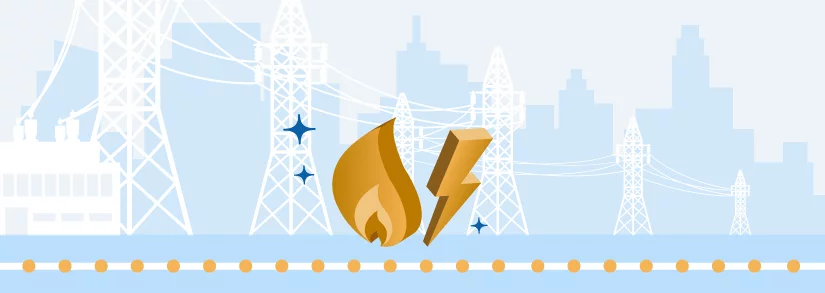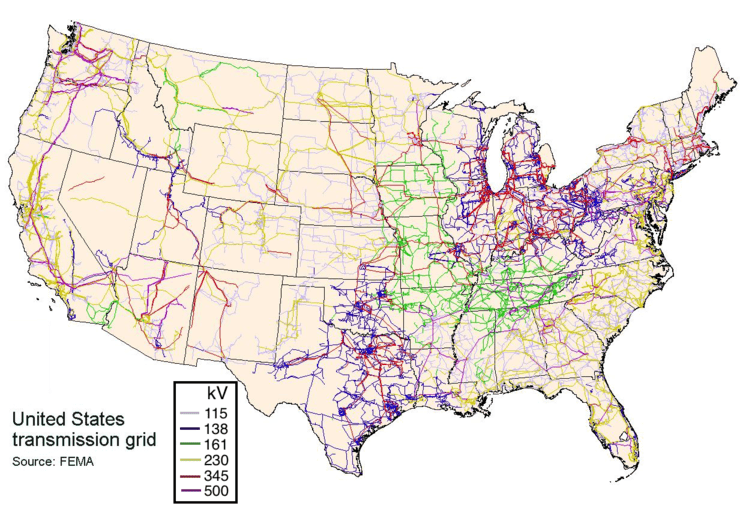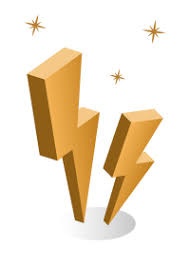What is the difference between transmission and distribution power lines?

There are 2 different types of electric lines, set up by utility companies, for the transportation of electricity. Transmission power lines are for long-distance, high-voltage electricity transportation. You can see them on the side of the freeway, for example. Distribution power lines are for shorter distances and transport lower voltage electricity on a local scale. These power lines are installed, and visible, along the sides of streets. Power line failure is a main cause of power outages across the U.S., so it's best to prepare for a power outage when possible. Scroll (or swipe) down to check out more details on transmission vs distribution power lines.
Transmission and distribution, simply explained
Power travels from power sources to residential, commercial and industrial customers. During this, the electricity goes through transmission lines and distribution lines. From one type of line to another, the electricity goes through transformers which modify the voltage in order to optimize the energy lost through electromagnetic fields.

Transmission power lines are used for interstate connections, for example.
Transmission power lines
Transmission power lines connect power plants to substations at a high voltage. Transmission lines can transport electricity from one end of the country to the other, using interstate connections. Transmission lines are also used to transport power between countries.

High-voltage transmission power lines
The voltage of transmission power lines can go anywhere from 69 kV up to 765 kV. The power poles are higher and cables are thicker than distribution power lines.
Bi-directional transmission power lines
Transmission lines are bi-directional: the electricity can go in both directions. This is a necessary feature for the balance of the grid. In wholesale electricity markets, electricity flows from areas of generation to areas of demand. But these areas of demand may change over time, so the electricity will travel in different directions.
Transmission power line maintenance
Transmission networks require operating more actively than distribution networks. Maintenance must be done through automatic and manual interventions.
Distribution lines are used for local electricity delivery.
Moving to Texas or already there? A majority of Texas residents live in deregulated electric zones where the competition between +70 electric providers enables the power to choose from electricity plans that offer 100% renewable energy, rate type options, or even annual freezes on summer rates!
Distribution power lines
Distribution lines are low voltage lines which bring electricity from substations to your home. The lines are smaller, and cover shorter distances. The whole distribution network in the US is not directly connected: they are connected through the substations which connect them to the transmission network.
Low voltage distribution power lines
The voltage of distribution lines varies between 4KV and 69KV. The cylindrical box is a secondary transformer, which brings the voltage down to 120V or 240V.

Mono-directional distribution power lines
Distribution lines in the US are traditionally made only to travel in one direction. Therefore the distribution network was not initially designed to accommodate generation. But since distributed generation has started to be implemented on grids worldwide, smaller generation facilities (wind turbines, solar panels, and other localized power generators) are plugged on the distribution network.
This causes more stress on the distribution grid, and grid renewal efforts are required in some cases to make it more efficient for these newer methods of power generation.
Distribution power line maintenance
As compared to transmission lines, distribution lines are passive systems, (they are not actively managed by operators or computer programs). Also, since they are traditionally uni-directional in power flow (from high voltage to low voltage), they do not require much maintenance. This has started to change in areas where distributed generation is implemented.
Distribution power lines, along with telephone lines, are known to have shoes thrown over and left to hang by their laces, especially at intersections. As this is believed to symbolize a drug dealing location and/or gang territory, there has been a significant reduction of the act over the last two decades. Cities like Chicago and Los Angeles have undergone massive removal efforts to reduce potential hazards and improve local life.